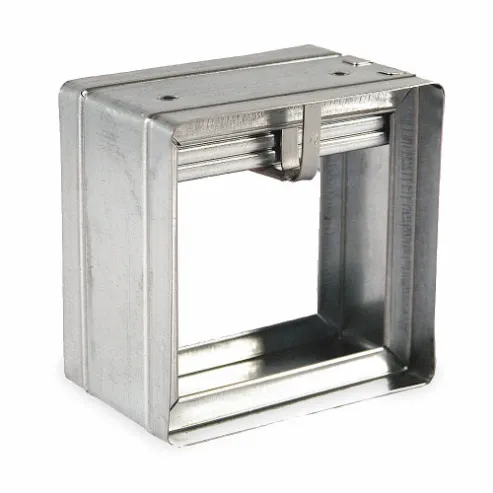Dayton 2TGA5 rectangular fire damper is employed in HVAC systems within commercial buildings and industrial facilities. They enhance fire safety by restricting the spread of flames and smoke through ventilation ducts during a fire emergency.
Features:
- Dayton 2TGA5 rectangular fire damper features 22 gauge galvanised steel construction ensuring durability and resilience against fire-related hazards.
- It has a fusible link that triggers at specific high temprature and closes shut using spring-loaded gates to prevent the spread of flames and smoke during a fire incident.
- This fire damper is equipped with a gravity-based closure system that automatically shuts off airflow when exposed to high temperatures.
- It is equipped with an extensive frame-less flange measuring 72 square inches, optimising airflow management within the ducts.
Compatible Accessories:
- Dayton Vertical / Horizontal Retaining Angle: This retaining angle aids in secure installation, ensuring the optimal functioning of the fire damper in various mounting positions.
- Dayton 2TGJ2 fusible link: It serves as a crucial component, triggering closure at elevated temperatures to enhance the damper's fire containment capabilities.
Frequently Asked Questions:
Q. At what temperature does the fusible link in this damper melt?
A. The fusible link melts at 165 degrees F, triggering the closure of the damper during a fire.
Q. What are the safety precautions to consider while using a fire damper?
A.
- Conduct routine inspections to ensure the fire dampers is in proper working condition.
- Adhere to applicable codes, standards, and regulations during installation and maintenance.
- Only trained personnel should handle fire damper inspections, testing and repairs.
- Maintain unobstructed access to the fire damper for inspections and maintenance.
- Regularly test the automatic closing and manual override mechanisms.
Q. What are the differences between manual and automatic fire dampers?
A. Manual fire dampers and automatic fire dampers are both crucial components in fire protection systems, designed to prevent the spread of fire and smoke within buildings. While manual fire dampers require physical intervention for activation, typically through a mechanical lever or switch, automatic fire dampers operate autonomously in response to fire alarms, smoke detectors, or temperature sensors. The key distinction lies in their activation mechanisms: manual dampers demand human intervention, offering greater control but potentially slower response times, whereas automatic dampers offer quicker and automated reaction to fire-related cues, ensuring rapid containment of fire and smoke for enhanced safety.
 Change Country
Change Country



